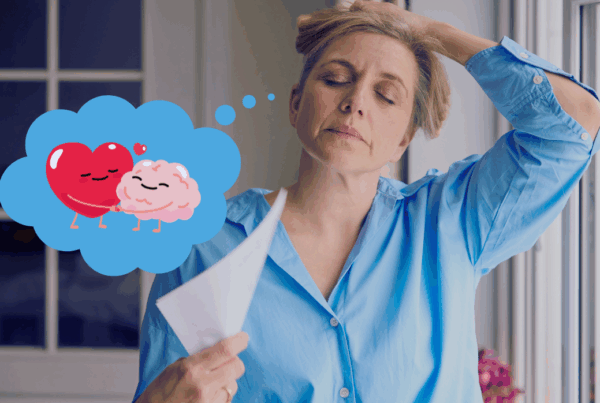Hormones have an important role to play in healthy hair
The Growth Cycle of Hair
The hair growth cycle is a continuous process that ensures the regeneration of hair. Each hair strand is at a different stage of the cycle, There are three main phases: anagen, catagen, and telogen.
- Anagen Phase (Growth Phase)
- Duration: Typically lasts between 2 to 7 years, depending on genetics, age, and health.
- Activity: During this phase, hair follicles are actively producing new hair cells. The hair shaft grows approximately 1 cm per month.
- Characteristics: The longer the anagen phase, the longer the hair will grow. This phase determines the length of your hair.
- Catagen Phase (Transitional Phase)
- Duration: Lasts for about 2 to 3 weeks.
- Activity: This phase marks the end of active hair growth. Hair follicles shrink and detach from the blood supply.
- Characteristics: The hair stops growing and the follicle prepares to shed the hair. Only about 1-2% of all hairs are in the catagen phase at any given time.
- Telogen Phase (Resting Phase)
- Duration: Lasts for about 2 to 4 months.
- Activity: During this phase, the hair follicle is inactive and the hair shaft is fully formed. Hair is eventually shed.
- Characteristics: Approximately 10-15% of all hairs are in the telogen phase at any given time. At the end of this phase, the hair falls out, and the follicle re-enters the anagen phase to begin the cycle again.
It is normal to shed around 50-100 hairs each day.
The distribution and type of hair across our body varies and this is because different areas of skin (and hair follicles) vary in their response to hormones. This is why our hair pattern changes at puberty and why men have different hair patterns to women. During menopause, several changes occur in the scalp’s androgen receptors that can contribute to hair loss and thinning.
Types of Hair Loss in Menopausal Women
- Diffuse Thinning: This involves a general thinning of hair across the entire scalp, often becoming more noticeable at the crown and front.
- Receding Hairline: The hairline may gradually move back, exposing more of the forehead.
- Bald Patches: Some women may develop small, round bald patches on the scalp.
- Dry and Brittle Hair: Hormonal changes can affect the moisture and strength of hair, leading to dryness and breakage.
Hormonal Influences on Hair Loss
Oestrogen: This hormone helps keep hair in the growth phase (anagen phase) longer. During menopause, oestrogen levels drop, which can shorten the anagen phase, leading to increased hair shedding and slower growth.
Progesterone: This hormone helps counterbalance the effects of androgens. During menopause, progesterone levels decline, reducing its moderating effect on androgens, which can lead to increased androgen activity and hair thinning.
If you have been pregnant, you may recall a healthy head of hair thanks to high levels of oestrogen and progesterone.
Androgens: include hormones like testosterone, dihydrotestosterone (DHT) and others that bind to androgen receptors. Hair loss is all about the androgens, so let’s dig into the impact of androgens on hair.
- Higher Relative Androgen Levels: With the decline in oestrogen and progesterone, the relative levels of androgens (such as testosterone) become higher. This increased relative concentration of androgens can make hair follicles more sensitive to their effects.
- Receptor Sensitivity: Hair follicles may become more sensitive to androgens due to changes in the scalp environment or genetic predisposition. This means that even normal levels of androgens can have a more pronounced effect on hair follicles during menopause.
- Increased Receptor Density: Some studies suggest that the density of androgen receptors on hair follicles may increase during menopause. More receptors mean that more androgens can bind to the follicles, potentially leading to increased hair thinning and loss.
- Conversion to DHT: Testosterone in the scalp is converted to (DHT) by the enzyme 5-alpha reductase. DHT has a much stronger affinity for androgen receptors than testosterone and is more potent in causing hair follicle miniaturization.
- Increased Binding: With more androgen receptors or increased DHT levels, there is more binding of DHT to the hair follicles, leading to progressive miniaturisation of the follicles and reduced hair growth.
- Shrinkage of Follicles: When DHT binds to androgen receptors on the hair follicles, it triggers miniaturization, where the hair follicles shrink, produce finer hair, and eventually stop producing hair.
- Shortened Anagen Phase: The growth phase of the hair cycle (anagen phase) becomes shorter, while the resting phase (telogen phase) becomes longer, leading to increased hair shedding and reduced hair density.
- Disruption of Growth Cycle: The binding of androgens to their receptors disrupts the normal hair growth cycle, causing hairs to enter the telogen (resting) phase prematurely, resulting in increased hair shedding.
- Reduced Hair Diameter: New hair that does grow is often thinner and less pigmented due to the impact of androgens on follicle health.
Managing menopausal hair Loss
Lifestyle and Hair Care
- Balanced Diet: Ensuring adequate nutrition to support hair health – protein, zinc, iron, vitamins C, A, E, D, B9 (folic acid), B7 (biotin), omega 3 fatty acids.
- Gentle Hair Care: Avoiding harsh chemicals and excessive heat styling and styles that pull on your hair..
- Regular Check-Ups: Monitoring for underlying health conditions like thyroid issues or anaemia that can be causes of hair loss.
Medical Treatments
- Minoxidil
Mechanism of Action:
- Vasodilation: Minoxidil is a vasodilator, meaning it widens blood vessels. When applied topically, it increases blood flow to hair follicles, providing more oxygen, blood, and nutrients, which can stimulate hair growth.
- Follicle Stimulation: It helps to prolong the anagen (growth) phase of the hair growth cycle and increase the size of hair follicles that have shrunk due to androgenetic alopecia.
- Cell Proliferation and Differentiation: Minoxidil has been shown to encourage the proliferation and differentiation of dermal papilla cells, which are crucial for hair growth.
Application and Results:
- Topical Usage: Minoxidil is usually applied directly to the scalp in liquid or foam form.
- Oral Usage: Oral minoxidil is taken as a pill, typically at a low dose, and provides a systemic effect.
- Results: Visible effects typically begin after 3 to 6 months of consistent use. Continued use is necessary to maintain results, as discontinuation will likely result in the return of hair loss. Oral minoxidil may sometimes be more effective than topical application, especially in cases where topical solutions are not well-tolerated or not effective.
- Spironolactone
Mechanism of Action:
- Anti-Androgen Effects: Spironolactone is an androgen receptor antagonist. It works by blocking androgen receptors, thus preventing androgens (like testosterone and DHT) from binding to these receptors on hair follicles.
- Inhibition of Androgen Production: It also reduces the production of androgens by inhibiting enzymes involved in their synthesis, such as 5-alpha reductase, which converts testosterone to DHT (a more potent androgen).
- Reduction of Oil Production: By decreasing androgen activity, spironolactone can also reduce sebum production, which is often associated with hair thinning.
Application and Results:
- Oral Usage: Spironolactone is typically taken orally in tablet form.
- Results: Improvements in hair density and reduction in hair shedding may be noticed after a few months, with more significant results often seen after 6 to 12 months of continuous use. As with minoxidil, continued use is necessary to maintain benefits.
- Finasteride
Mechanism of Action:
- 5-Alpha Reductase Inhibition: Finasteride works by inhibiting the enzyme 5-alpha reductase, which converts testosterone to DHT. By reducing DHT levels, finasteride helps to prevent hair follicle miniaturization.
- Decrease in Androgen Activity: Lowering DHT levels reduces androgen activity on hair follicles, helping to slow down hair loss and promote regrowth.
Application and Results:
- Oral Usage: Finasteride is taken as a daily pill.
- Results: Many women notice a reduction in hair loss and some regrowth within 6 to 12 months. Like the other treatments, continuous use is necessary to sustain benefits.
Using minoxidil (topical or oral), spironolactone, and finasteride together can have a synergistic effect, as they address hair loss through different pathways. Minoxidil primarily enhances blood flow and stimulates follicle activity, while spironolactone and finasteride reduce androgen effects on hair follicles. Continued use is necessary to maintain results, as discontinuation will likely result in the return of hair loss.
- Menopause Hormone Therapy (MHT)
The effectiveness of MHT in preventing hair loss can vary from person to person. Whilst MHT can counter the effect of androgens, it is best considered alongside other treatments and is not indicated for hair loss alone.
Some forms of MHT are better than others when it comes ot hair. Whilst in generally body-identical progesterone is preferred by most doctors and women, the progestin drospirenone (which is derived from 17-α spironolactone), may have a more potent protective effect against hair loss.
Understanding these changes and addressing them with appropriate treatments can help manage hair loss during menopause. Given the long duration of the hair growth cycle, seeing the results of treatment take time and treatment needs to be ongoing.
While hair loss may seem superficial, it has deep implications for many women. Addressing and preventing hair loss is essential for maintaining both physical appearance and mental well-being. If you’re experiencing hair loss, seeking professional advice and exploring treatment options can significantly improve your quality of life.
Key Take Aways
Female hair loss takes various forms.
The effect of androgens (eg testosterone) are primarily responsible for female hair loss seen at menopause.
Minoxidil, spironolactone and finasteride are effective treatments for female hair loss, each targeting different aspects of the hair growth cycle and androgen activity.
Treatment needs to be longterm and it takes 3-6 months to notice improvement.
Iron deficiency and thyroid disease are common medical causes of hair loss.






